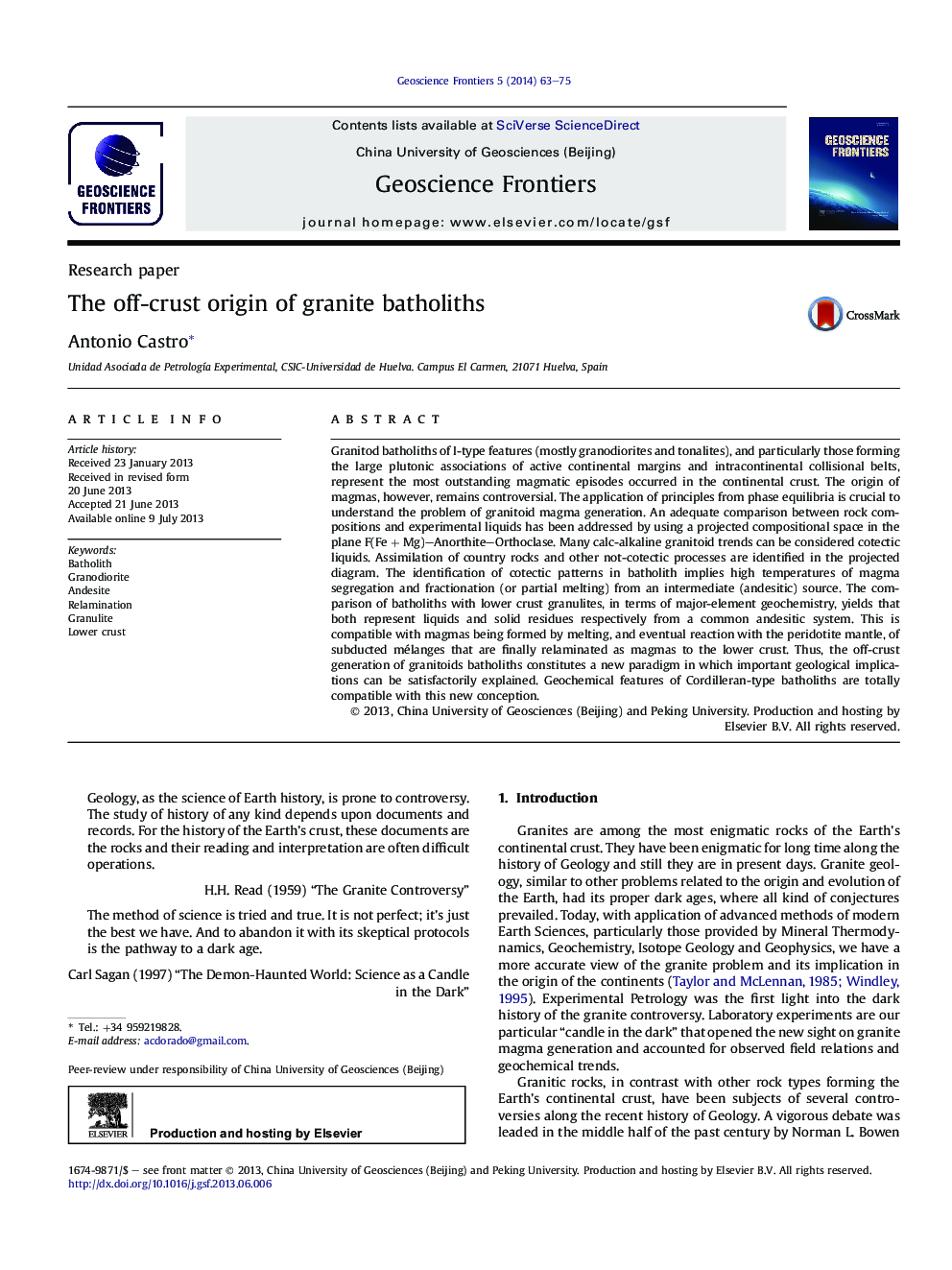| Article ID | Journal | Published Year | Pages | File Type |
|---|---|---|---|---|
| 4681759 | Geoscience Frontiers | 2014 | 13 Pages |
•Batholiths (I-type) come from melting of subducted mélanges.•Lower crust granulites are the residues left after granitic melt segregation.•The bulk composition of parental magma system is andesitic.•The isotopically hybrid nature of batholiths is mostly inherited form the source.
Granitod batholiths of I-type features (mostly granodiorites and tonalites), and particularly those forming the large plutonic associations of active continental margins and intracontinental collisional belts, represent the most outstanding magmatic episodes occurred in the continental crust. The origin of magmas, however, remains controversial. The application of principles from phase equilibria is crucial to understand the problem of granitoid magma generation. An adequate comparison between rock compositions and experimental liquids has been addressed by using a projected compositional space in the plane F(Fe + Mg)–Anorthite–Orthoclase. Many calc-alkaline granitoid trends can be considered cotectic liquids. Assimilation of country rocks and other not-cotectic processes are identified in the projected diagram. The identification of cotectic patterns in batholith implies high temperatures of magma segregation and fractionation (or partial melting) from an intermediate (andesitic) source. The comparison of batholiths with lower crust granulites, in terms of major-element geochemistry, yields that both represent liquids and solid residues respectively from a common andesitic system. This is compatible with magmas being formed by melting, and eventual reaction with the peridotite mantle, of subducted mélanges that are finally relaminated as magmas to the lower crust. Thus, the off-crust generation of granitoids batholiths constitutes a new paradigm in which important geological implications can be satisfactorily explained. Geochemical features of Cordilleran-type batholiths are totally compatible with this new conception.
Graphical abstractFigure optionsDownload full-size imageDownload as PowerPoint slide
